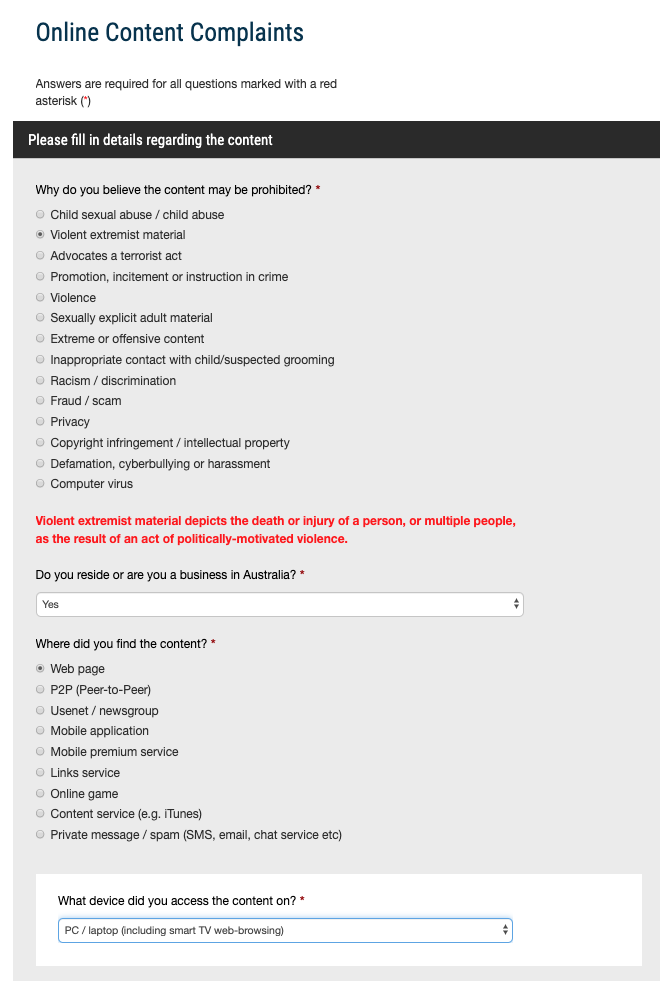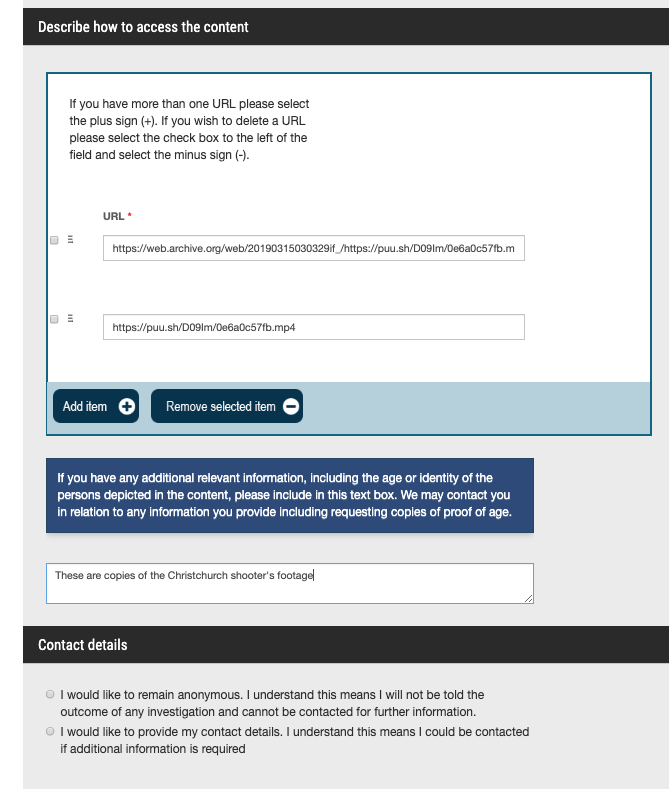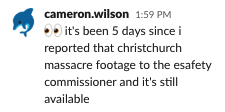After an Australian man livestreamed himself in March 2019 murdering 51 people at two mosques in Christchurch, New Zealand, the horrific footage went viral online.
The Australian government scrambled to shut it down and in the months following the shooting more than 40 websites hosting the footage were voluntarily blocked by Australian internet service providers.
Then in September 2019, eSafety commissioner Julie Inman Grant, was given the power to compel ISPs to block websites in response to Christchurch, and blocked eight.
BuzzFeed News has obtained a list of those websites. There are seven on the list as of Feb. 10, 2020, after one website removed the prohibited content in October. Five of the seven are banned for continuing to host the Christchurch shooter's manifesto.
Among them are three online news publications (Polish site Sejmlog Media, Italian site Il Foglio and American site Hollywood LA News), a right-wing blog with a Canadian domain named BlazingCatFur, and a Swedish file uploading website.
The other two, blocked for hosting the Christchurch shooter's livestream, are forums where users share gruesome videos of violence. BuzzFeed News has chosen not to name them.
None of the seven websites are based in Australia. Five are hosted in the US, one in the Netherlands, and one in Italy.

Inman Grant's powers range from the specific — blocking websites hosting the Christchurch shooter's video or manifesto — to the broad ability to fine or even jail people posting "abhorrent violent material", which can include recordings of a terrorist attack, as well as murder, torture and rape.
Given her powers are not yet a year old, and are set to be expanded in 2020, I wanted to see what happens when you ask the eSafety Commissioner to exercise them.
So, I did what any normal person would do: I found terrorist content online and reported it to see what would happen.

On a Wednesday afternoon, I went on to the Office of the eSafety Commissioner's website and filled out an online complaint form that deals with everything from a computer virus to violent extremist material.
Once I selected violent extremist material, the form asked me to provide links and a description of the content I'd found.
I shared a link to a copy of the Christchurch shooter's livestream I had found online.
Despite the unprecedented powers held by Inman Grant, and her efforts thus far to block it, the video was relatively easy to find. I chose the Christchurch livestream because the eSafety Commissioner has a unique and specific power to block that video.

You can remain anonymous or give your name and contact details when you make a complaint. It also gives you the option to hear a response of the outcome of your complaint. I put in my name and email, asked for a response, and submitted the form.

After that, I waited. I checked to see if the link still worked every day — and it did. The following Monday, I told my colleagues in our work Slack channel that it was still up.

The next morning, I checked again and... it was gone. Five working days after I initially reported the video, the website hosting the video told me the page could no longer be found.

I haven't received a response from the eSafety Commissioner's office but, given the website itself is not blocked, it appears the website's administrators voluntarily took down the footage in response to contact from the agency.
The eSafety Commissioner can't block a website unilaterally for hosting content produced by terrorists other than the Christchurch shooter, but may order the website's hosts to stop hosting the content.
Documents released under the Freedom of Information Act show an example of such an order. A July 2019 abhorrent violent material notice and correspondence was sent by Inman Grant to US-based HostGator for hosting a video showing "a terrorist act that causes a person’s death or serious physical harm to a person".
In changes flagged in an opinion piece on Tuesday, communications minister Paul Fletcher said the government would seek to expand Inman Grant's powers later this year.
New online safety legislation will include "a new power for the eSafety Commissioner, should a tragedy such as Christchurch occur again, to direct internet service providers to block such access to terrorist and extreme violent content, with a view to preventing that content going viral", Fletcher wrote.
